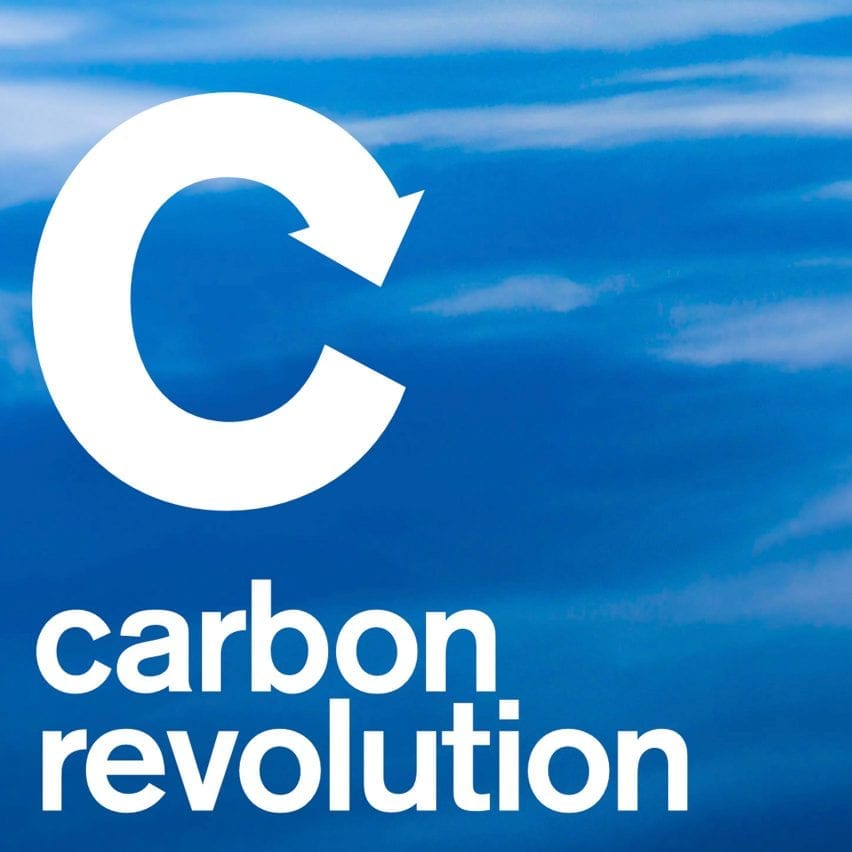
"It is not acceptable for designers to be unaware of the carbon impact of their creations"
Designers should design with carbon in mind according to environmental consultant Sophie Thomas, who sets out ten steps they can take to help eliminate emissions in the products they create.
The carbon implications of the design process are monumental, from material selection, manufacture, lifetime operation and maintenance to where our stuff ends up at the end of use-life.
With corporations and governments around the world declaring a climate emergency and setting out plans to drastically cut carbon emissions, it is just not acceptable for designers to be unaware or uncaring about the carbon impact of their creations. Whether it is a piece of packaging, an electronic product, an item of clothing or a building, each decision right from the start has carbon consequences.
The 2019 Ellen MacArthur Foundation report Completing the Picture: How the Circular Economy Tackles Climate Change demonstrated that efforts to tackle the climate crisis have focused on a transition to renewable energy and energy efficiency.
But this only addresses 55 per cent of emissions. The remaining 45 per cent comes from producing the products we use every day, showing that we must shift our thinking towards a more circular, zero-carbon design process. Here's a list to start you off.
1. Don't design in the dark
Get yourself some data to analyse. Data is king, so doing a lifecycle analysis (LCA) before you even start prototyping is key. But can be pretty complicated, so it helps to find a friendly systems engineer or LCA fanatic to collaborate with. You can also download one of the many LCA plugin tools available. You want one with a good database behind it.
Alternatively, you may find that you can begin working with some rough data that may be easier to collect. This "quick and dirty" approach is seen as a good way to see roughly where you should focus efforts.
A few pointers. Don't forget to set your boundaries: do you know what will happen to your product after it has finished its use life? How far into the supply chain do you want to dig? You may be designing a chair, but the velvet you want to cover it with didn't just materialise: the farmland was mowed and fertilised; seeds were sown, cotton was watered, cut and processed; cloth was dyed and woven; fabric was cut, packed and delivered. And that was before you had even started the creation of the chair itself.
All these processes, both before you start designing and when the product is disposed of, have carbon impacts through energy, water and waste. The majority – approximately 80 per cent – is set at the concept design stage. Most of the designer's direct impact will be in the material choices. Make a list of all your raw materials and see how much information you can get on each.
Start with the suppliers: where are they based? Where do they get the material from? What are the raw ingredients? How does the material travel to them and then to you? How are the factories that make the material powered? What does the factory do with its waste? Do they have any environmental accreditation? Do they monitor their suppliers? Do they have up-to-date, detailed spec sheets? If not, can you ask them for data?
2. Crunch the numbers
You can start to transform some of this data into carbon dioxide equivalent (CO2e) data and you will quickly see where the big impacts are. For example, if you know the leather you are ordering is being flown from Brazil then find a good online air-miles calculator to give you the flight CO2 emissions (for this example, it's 1,826 kilograms).
You should be able to quickly get a picture of where your impacts may be. These are most often in the material production, transportation, water usage and waste streams. Once you have this back-of-an-envelope data, start to consider different approaches to reduce your impact.
3. Investigate the too-good-to-be-true
Alarm bells should be ringing if a spec sheet says "eco-material", "recyclable material", "carbon-neutral" or something equally fluffy and non-specific. Find out more. If it is better than it reads, tell them to re-write the information.
4. Don't over-specify
We tend to err on the side of caution and sometimes over-specify the quantities just to make sure things don't fall down or break but try to optimise and minimise where possible without affecting the design. Trust your calculations, your design experience and the material.
5. Design for the use-life
Don't specify a material that outlives the life of your product 1000-fold (think a single-use plastic bottle full of water). Aim to bring these lives closer together.
6. Reuse and reduce as much as possible
Get friendly with the concept of waste hierarchy and design so that your product can have an extended life through repair or refurbishment. Try to increase the life of your product by making it reusable and ultimately recoverable. Build a third or fourth user-experience scenario into your brief.
7. Use materials with high recycled content
This will not only bring down your carbon impact but will also increase demand for the recycled material.
8. Be the storyteller
Tell the truth. Sometimes you can't do as much as you want to reduce your product's carbon footprint. Don't be afraid to tell your customers and clients what you have done and what you are still trying to do and why you can't yet do it.
9. Act as a citizen
More and more people want to take action and cut their carbon footprint but are often not exactly sure how to do it or what to tackle first. But while governments need to change policies and technologies need to develop, our behaviour as a citizen can have a real impact.
Everything we do, every lifestyle choice, every item we buy, eat, use or discard has the potential to emit carbon. Reduce food waste. Repair broken stuff. Go meat-free. Drop the car or go electric. Find a green electricity supplier. Search for fossil-free pensions and investments.
10. Don't wait
Act now. Declare a climate emergency. Set yourself a net-zero carbon target. Become a B-Corp. Don't bury your head in the sand. Life is too short. We are running out of time and resources.
Sophie Thomas is a designer, environmentalist and founding partner at London environmental communication-design studio Thomas.Matthews. She founded The Great Recovery, a pioneering project that explored the circular potential of materials and advised Dezeen on how to reduce waste and emissions at its 2019 Dezeen Day conference.

Carbon revolution
This article is part of Dezeen's carbon revolution series, which explores how this miracle material could be removed from the atmosphere and put to use on earth. Read all the content at: www.dezeen.com/carbon.
The sky photograph used in the carbon revolution graphic is by Taylor van Riper via Unsplash.